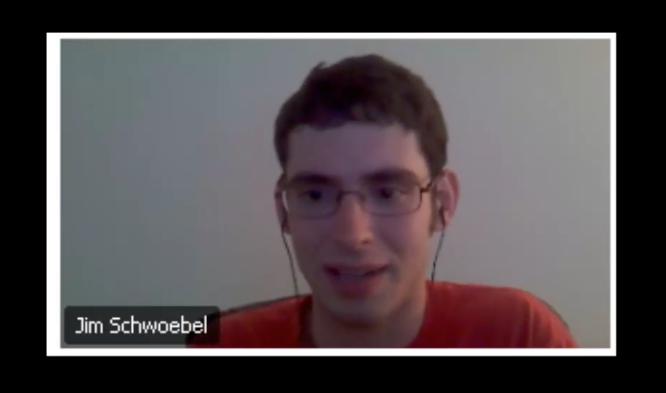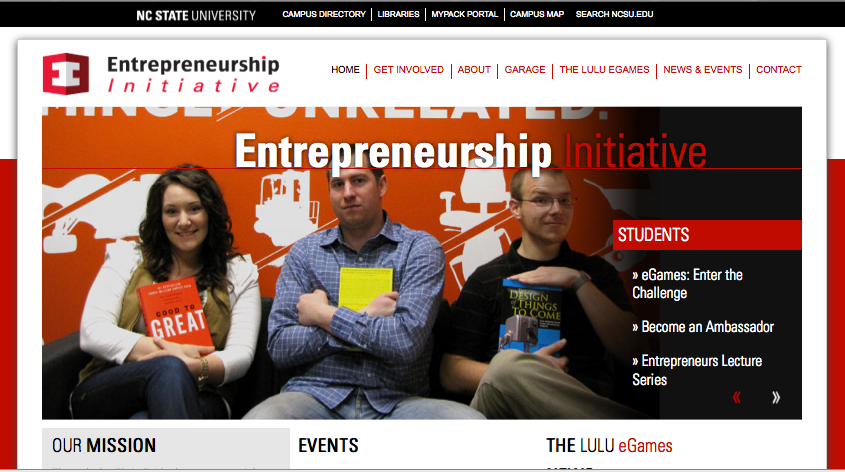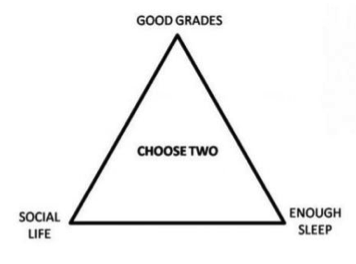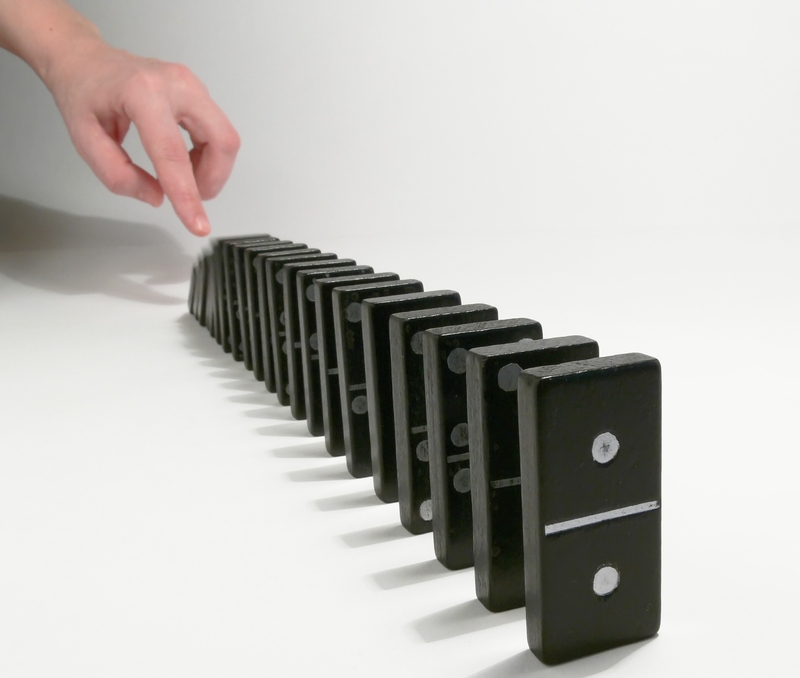
In my first post, we played with the idea of creating “autocatalyzing” events–being the person who gets a new event or initiative started but then gives up control to another person or to the community itself. In this post, I’d like to elaborate on how I came to this idea, and explain why being a true student leader, while quite difficult, is a tremendous opportunity to learn and grow as a person.
1. You Get To Learn Something Real
When I found myself with the opportunity to lead 10 students in cultivating more entrepreneurship on campus, I was excited for the chance to make an impact. One of the first things I did to prepare was sign up for a leadership class offered specifically to undergraduates leading student organizations on campus. This seemed like the perfect opportunity to wrap my head around the whole “leadership” thing. Unfortunately, this turned out to be incorrect. In the class, we were exposed to all sorts of leadership styles, theories, and techniques. I did well on the tests, but found myself unable to apply any of the concepts to my role in the NC State Entrepreneurship Initiative.
If you took a foreign language in high school, you might have had a similar experience. Like many people, I took 4 years of high school Spanish, but today can’t hold a conversation with a native speaker to save my life. After “Hola, como estas, muy bien,” I’m like a deer in headlights. I don’t even know what to say if I’m NOT muy bien!
In both high school Spanish and this leadership class, I was learning about a topic, not learning a skill. I think Richard Feynman gets it right when he says that there is a big difference between knowing the names of things and actually knowing about that thing.
[youtube http://www.youtube.com/watch?v=05WS0WN7zMQ&w=420&h=315]
The very fact that we made it to college means that we are really good at “knowing the names of things” because our environment values that type of learning. Knowing what to call things is vitally important to effective communication. But as a student leader, you realize that knowing the difference between “Great Man Theory” and “Relational Based Leadership” means basically nothing. Taking the leadership class was not really what I was hoping for, but I ended up learning all that was needed by actually doing things, which not every student gets a chance to do.
2. You Stop Making Excuses

“I just didn’t have time this week.”
As students, one of our favorite pastimes is telling other people how busy we are. We love boasting about our all nighters, the hours we spend in the library, and the amount of coffee we drink. Why is this?
During one EI Student Network meeting, Raleigh entrepreneur and friend Anthony Pompliano discussed the difference between being busy and being productive. He explained that in college he too would boast about spending 10 hours in the library “studying,” but in reality most of that time was spent on facebook, twitter, NFL.com, and doing anything other than actually studying. He talked about how in entrepreneurship, nobody cares how long you spent on a product, as long as it solves their need.
As a student leader, you have a rare opportunity to learn this lesson 5, 10, maybe 15 years before most people do. First, you will find that juggling classes, a life, and making an impact on campus will force you to reevaluate how you spend time. You will find that it is not possible to simply throw more hours at things, hoping that brute force will solve them.
Furthermore, you will learn how to handle situations when members of your team use the “I just didn’t have time” excuse after missing a deadline. When someone on your team is consistently missing deadlines, it’s a sign that they might not be a good fit for your team moving forward. I’m of the opinion that there are really no excuses for anything, because if you really want something you will make it happen. Making excuses is just a roundabout way of saying that someone or something is not a high priority for you, and these are not the people you want on your team.
3. You Start Viewing Constraints as Opportunities

In the book “Rework,” one of my favorite entrepreneurs, David Heinemeier Hansson, explains why workaholics never win. His company, 37signals, is famous for taking on industry giants like Microsoft by selling aggressively simple software. David’s philosophy is not to work harder, but to use creativity to solve problems in easier ways. In 2005, David invented a widely popular open source programming language called Ruby on Rails. “Rails” now drives much of the web 2.0 space, but would you believe he developed it while running a design company, developing software of his own, and getting his MBA? Even crazier, he developed 37signals’ best selling project management product “Basecamp” on only 10 hours a week.
Imagine telling David that you didn’t have time to hang some flyers because you had homework due.
The thing about David is that he is not some super-human, he just understands that constraints are tremendous opportunities to innovate. While the world around him was complaining about how long it took to develop software, he invented a totally new programming language. He was forced to come up with a creative solution because he had more obligations than hours in the day.
Most college students don’t give themselves the opportunity to use creativity to work more effectively, and they let school consume their entire day. We spend whole weekends in the library simply because we can. This is “Parkinsons Law”–whatever work you have will consume all the allotted time for its completion.
As a student leader, you don’t have the luxury of unchecked procrastination. If you want to hang onto your grades, make an impact, and get your 8 hours of sleep in a night, you need to find creative ways to detach your time from value. This pressure is where the idea of creating autocatalytic events came about, which has at least doubled our community’s size.
By embracing constraints, you can do great work. Don’t let any one part of your life consume all your time; box it up and starting looking for unobvious ways to do more in less time.
4. The Opportunity Snowball
 The final reason that being a student leader is the best thing you can do in college is it can begin a lifelong accumulation of advantage. Studies cited by famous books like Gladwell’s “Outliers” are proving that most successful people become successful through a compounding series of opportunities. By doing a great job at everything they do, one initially small opportunity leads to more and more chances to do what they love and discover even more opportunities. I certainly believe that my time as a student leader is the start of a snowball effect of great new things to come.
The final reason that being a student leader is the best thing you can do in college is it can begin a lifelong accumulation of advantage. Studies cited by famous books like Gladwell’s “Outliers” are proving that most successful people become successful through a compounding series of opportunities. By doing a great job at everything they do, one initially small opportunity leads to more and more chances to do what they love and discover even more opportunities. I certainly believe that my time as a student leader is the start of a snowball effect of great new things to come.
So grab your chance to make an impact and do they very best you can. There’s no telling what new doorways may open.
 Sean Newman Maroni is a senior in mechanical engineering at North Carolina State University. He is a Student Ambassador and the co-founder of BetaVersity, a startup specializing in building and supporting innovation ecosystems (see our blog post on it here). Sean can be reached at Sean@BetaVersity.com, and can be found writing about the amplification of human potential at RefuseToPeak.com
Sean Newman Maroni is a senior in mechanical engineering at North Carolina State University. He is a Student Ambassador and the co-founder of BetaVersity, a startup specializing in building and supporting innovation ecosystems (see our blog post on it here). Sean can be reached at Sean@BetaVersity.com, and can be found writing about the amplification of human potential at RefuseToPeak.com











